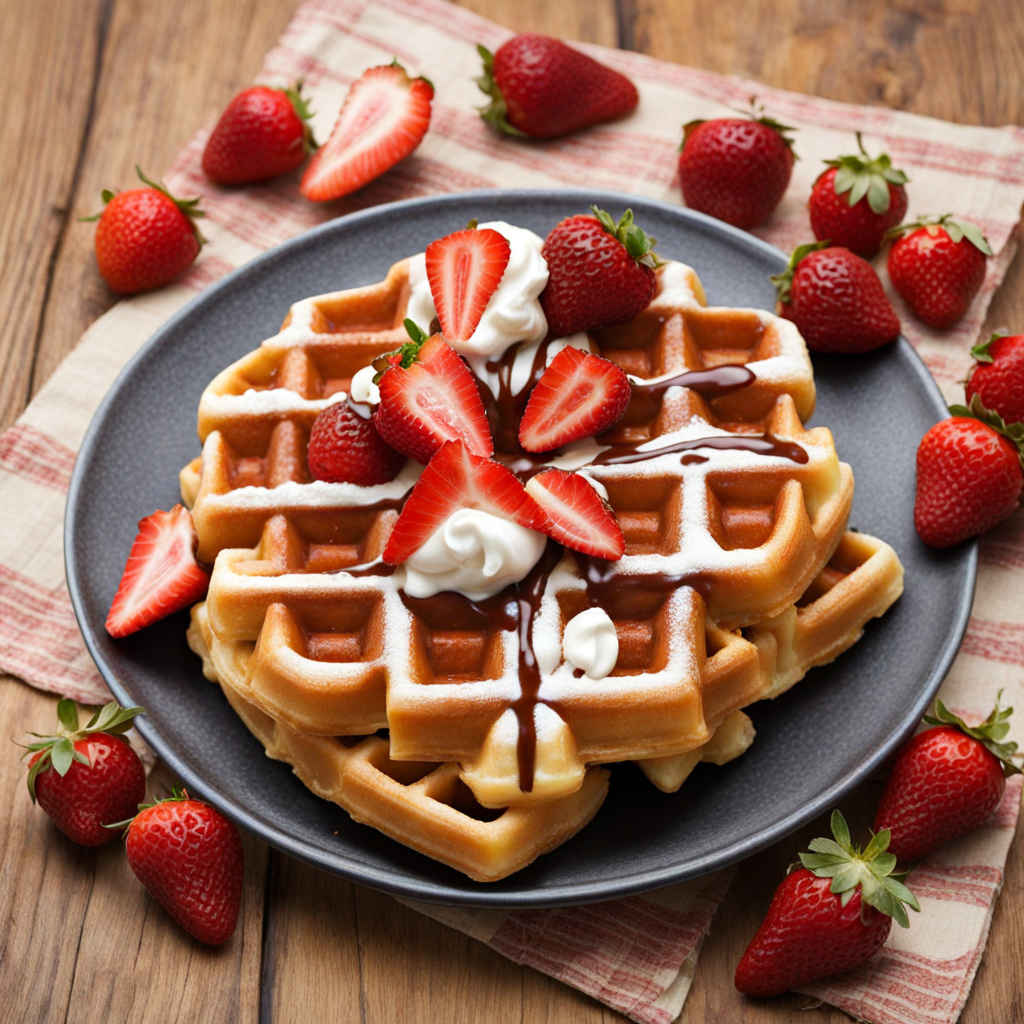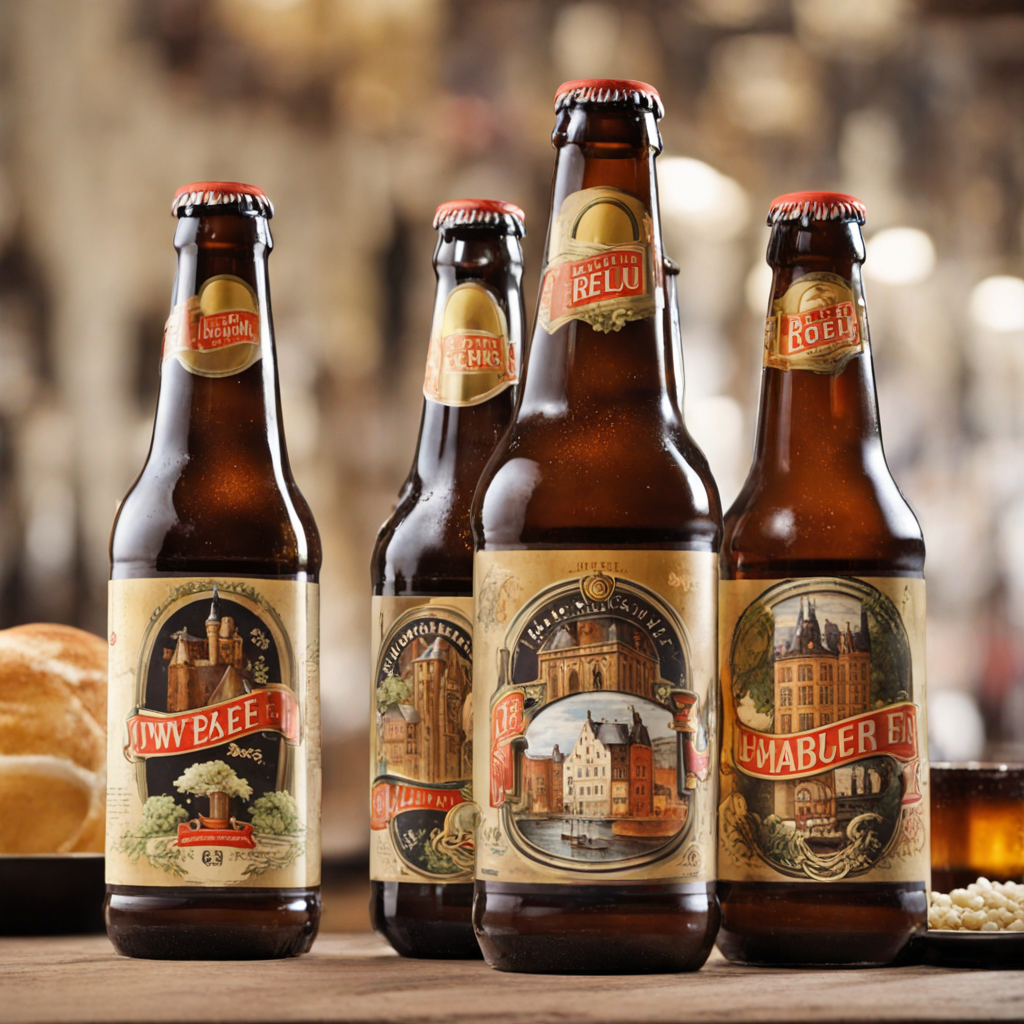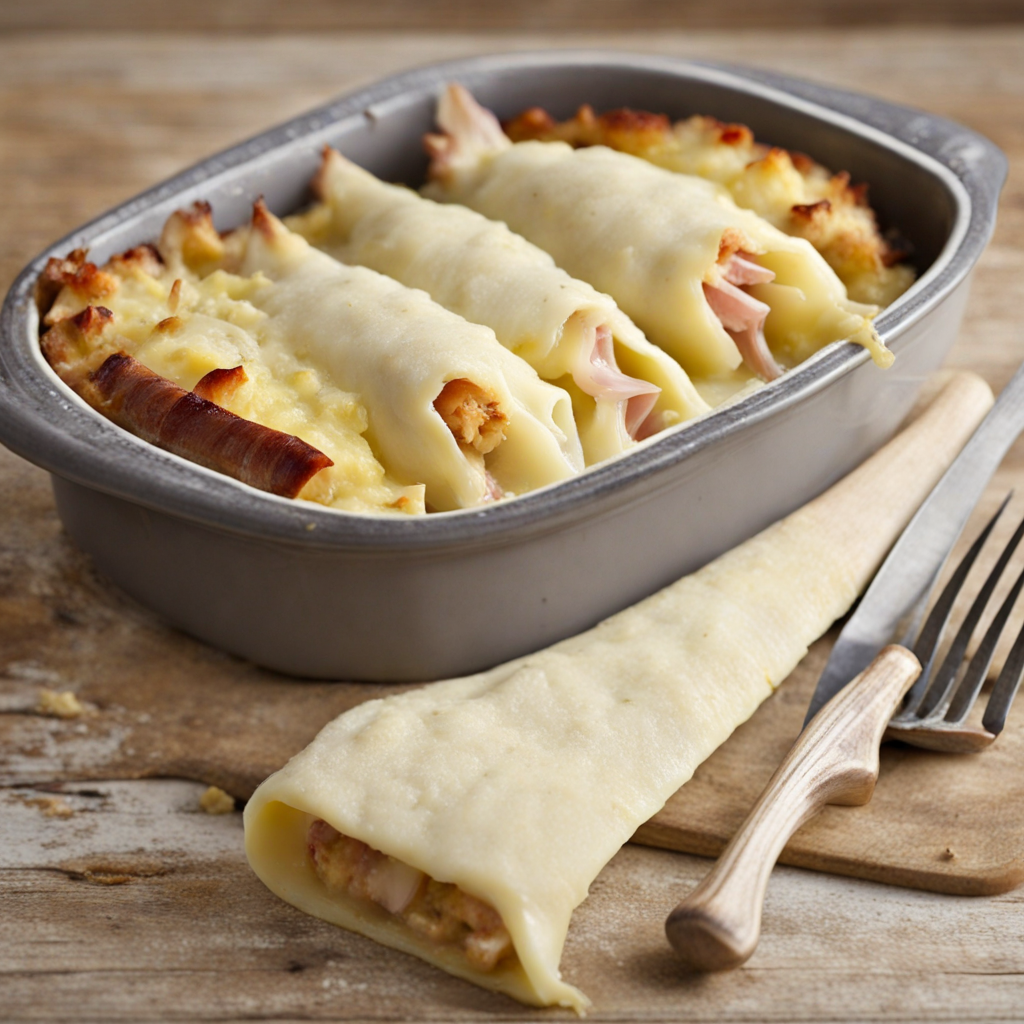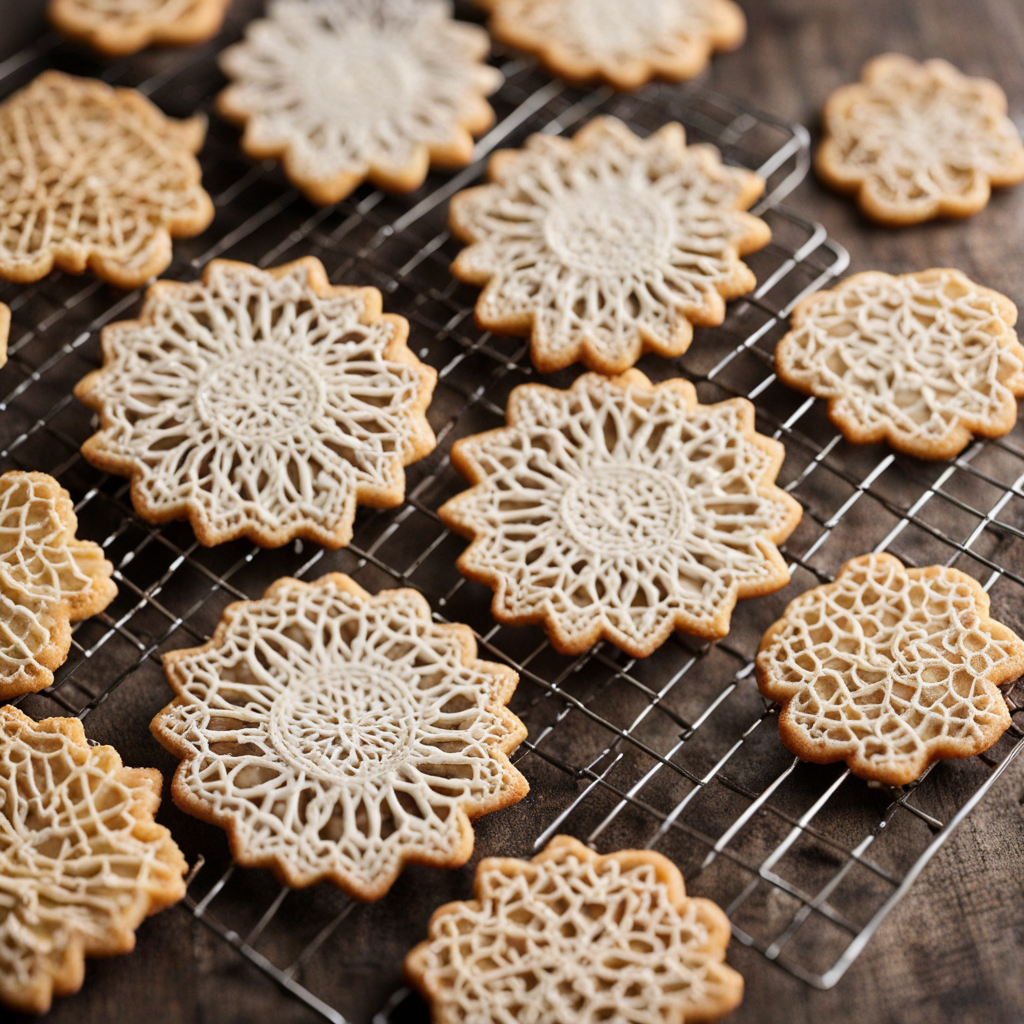Belgian Waffles
Belgian waffles are a delightful treat that embody the essence of indulgent breakfast or dessert. These waffles are characterized by their light, airy texture and deep pockets, which are perfect for holding a variety of toppings. Made from a batter that typically includes flour, eggs, milk, and sugar, Belgian waffles are often leavened with yeast or baking powder, resulting in a crisp exterior and a soft, fluffy interior. They are larger and thicker than their American counterparts, making them a satisfying choice for any meal of the day. One of the most appealing aspects of Belgian waffles is their versatility. They can be enjoyed plain or dressed up with an array of delicious toppings. Classic accompaniments include fresh berries, whipped cream, and a generous drizzle of maple syrup or chocolate sauce. For an elevated experience, consider adding a scoop of ice cream or a sprinkle of powdered sugar. The combination of the warm, golden waffle with the cold, creamy toppings creates a delightful contrast that is both comforting and luxurious. In Belgium, waffles come in two main varieties: Brussels and Liège. Brussels waffles are light and crispy, often served as a rectangular grid, while Liège waffles are denser and chewier, featuring caramelized sugar throughout. Both types offer a unique taste experience that captures the heart of Belgian cuisine. Whether enjoyed as a street food snack or a gourmet treat in a cafe, Belgian waffles promise to transport your taste buds to the charming streets of Belgium, making them a must-try for anyone seeking new culinary adventures.
How It Became This Dish
The Delicious Journey of Gaufres: Belgium’s Beloved Waffles Belgium, a country renowned for its rich culinary heritage, is perhaps best known for its splendid waffles, or 'gaufres' as they are called in French. These delightful treats, with their distinctive grid-like pattern and pillowy texture, have a history that interweaves with the cultural fabric of Belgium itself. The story of gaufres is not just a tale of a beloved food item; it is a narrative steeped in tradition, regional pride, and evolving culinary techniques. #### Origins of Gaufres The history of gaufres can be traced back to the Middle Ages. The term 'gaufre' is derived from the Old French word 'wafel,' which means honeycomb or cake, hinting at its textured surface. The earliest forms of waffles were quite different from the fluffy, sweet versions we enjoy today. Medieval recipes included a mixture of flour and water, cooked between two metal plates, often adorned with religious or family insignia. These were not exclusively sweet; they could be savory, flavored with herbs or cheese, and were typically enjoyed by the upper classes. As the years progressed, the waffle began to evolve, influenced by regional ingredients and culinary practices. By the 14th century, these early waffles were being sold at fairs and markets, becoming a popular street food. The first documented mention of waffles in Belgium can be found in a 16th-century cookbook, which included recipes for both sweet and savory variations. #### The Cultural Significance of Gaufres Gaufres hold a special place in the heart of Belgian culture. They are more than just a dessert; they represent a tradition that brings families and communities together. In Belgium, waffles are often enjoyed during festivals, fairs, and family gatherings, symbolizing celebration and conviviality. The act of sharing gaufres, often topped with whipped cream, chocolate, or fresh fruits, is a communal experience that fosters connection. In addition to their social significance, gaufres are also tied to regional identities. Belgium is home to various types of waffles, each with its own unique characteristics, reflecting the diversity of the country. The two most famous styles are the Brussels waffle and the Liège waffle, each with distinct textures and flavors. #### The Evolution of Gaufres: Regional Variations 1. Brussels Waffle: Light and airy, the Brussels waffle is characterized by its square shape and deep pockets, making it perfect for holding toppings. This version became popular in the 19th century, particularly after the 1960 Brussels International Exposition, where it was introduced to a wider audience. Often served with a dusting of powdered sugar, whipped cream, and fruits, the Brussels waffle embodies a sense of elegance and is frequently enjoyed as a dessert or a sweet snack. 2. Liège Waffle: In contrast, the Liège waffle is denser and richer, made with a yeast-leavened dough that includes chunks of pearl sugar. This version is believed to have originated in the city of Liège and dates back to the 18th century. The caramelized sugar on the exterior gives it a delightful crunch, while the interior remains soft and slightly chewy. The Liège waffle is typically eaten plain or with a light dusting of sugar, allowing the flavors to shine through. Both styles of gaufres have found their way onto international menus, showcasing Belgium's culinary influence. The exportation of gaufres, particularly during the 20th century, saw them becoming a staple in many countries, often adapted to local tastes and preferences. #### Gaufres in the Modern Era As the 20th century progressed, gaufres continued to evolve. The rise of globalization and tourism brought new influences and innovations to this traditional delicacy. In many Belgian cities, gaufres became a popular street food, sold at food stalls and markets, appealing to both locals and tourists alike. Vendors began to experiment with flavors and toppings, introducing variations such as chocolate, fruit, and even savory options. In recent years, there has been a resurgence of interest in artisanal and gourmet gaufres, with chefs pushing the boundaries of traditional recipes. Creative combinations like matcha gaufres or gaufres served with gourmet ice cream have emerged, appealing to a new generation of food enthusiasts. Social media has played a significant role in this evolution, showcasing visually stunning gaufres that entice food lovers around the world. #### Gaufres: A Symbol of Belgian Heritage Today, gaufres are more than just a sweet treat; they are a symbol of Belgian heritage and identity. They evoke nostalgia for many Belgians, who have fond memories of enjoying gaufres at fairs, family gatherings, or local bakeries. The waffle has become a point of pride for the nation, with numerous festivals dedicated to celebrating this delicious food. Belgium's commitment to preserving its culinary traditions is evident in its efforts to promote gaufres as a cultural product. Various organizations work to protect traditional recipes and methods, ensuring that future generations can continue to enjoy authentic gaufres. Additionally, the European Union has recognized the importance of regional foods, leading to initiatives aimed at safeguarding Belgium’s gastronomic heritage. #### Conclusion The history of gaufres is a rich tapestry woven with threads of culture, tradition, and innovation. From their humble beginnings in the medieval kitchens of Belgium to their status as a beloved delicacy enjoyed around the world, gaufres are a testament to the enduring power of food to bring people together. Each bite tells a story of generations past, of families gathered around the table, and of a nation proud of its culinary legacy. As we savor a warm gaufre today, topped with our favorite ingredients, we partake in a tradition that spans centuries—one that continues to evolve while remaining deeply rooted in Belgian culture. Whether enjoyed on a bustling street corner in Brussels or as a comforting dessert at home, gaufres are not just food; they are a celebration of life, community, and the joy of sharing.
You may like
Discover local flavors from Belgium







